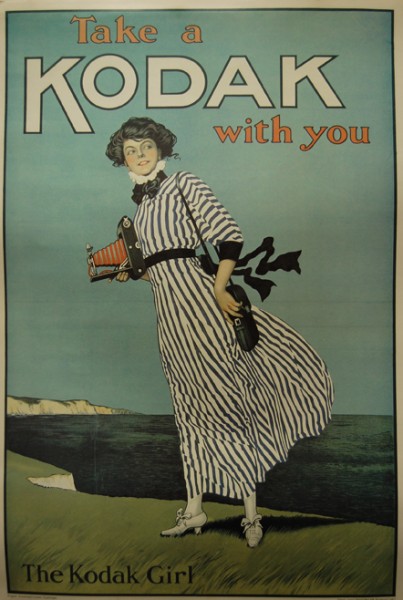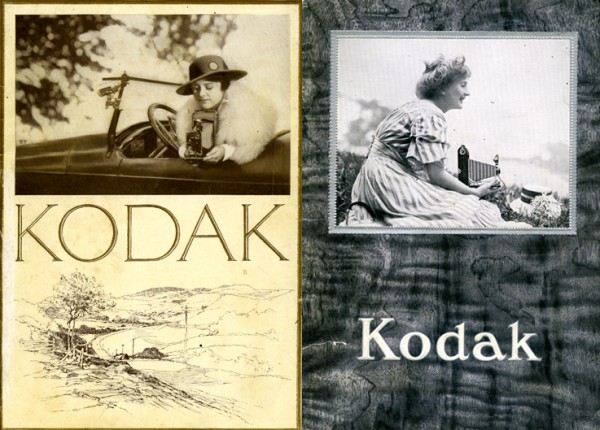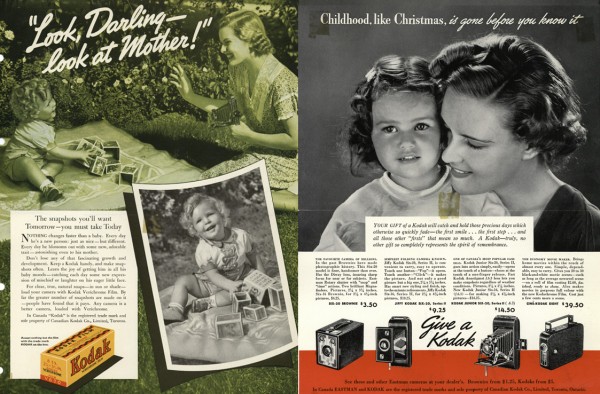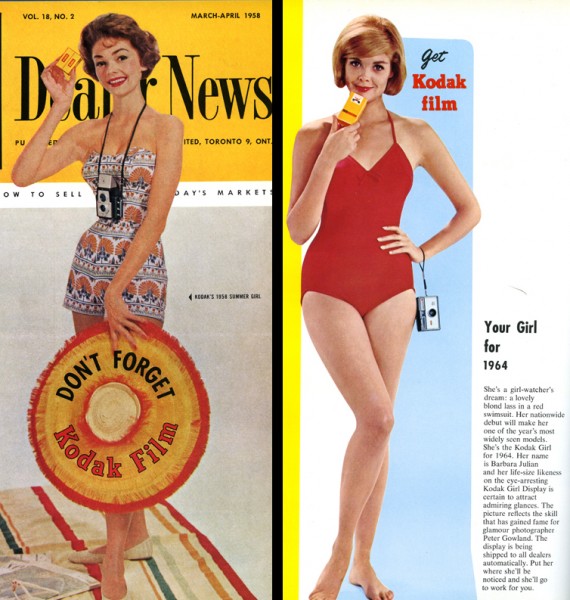
It’s an image that is familiar to many: the fashionable, romantic woman, on a wind swept beach cradling her Kodak camera. Bearing a striking resemblance to the Gibson Girl, this representation of an independent women at the dawn of the progressive era was part of a savvy marketing strategy by Kodak that came to be known as the “Kodak Girl” (Jacob, 2011).
At this time, Kodak had begun to produce roll film, cheaper, more portable cameras, and a system that allowed film to be sent back to the company (and later your local drug store) for development. With the need for the amateur to have a darkroom and complicated and expensive chemicals and equipment was eliminated, photography was now accessible to everyone.
And Kodak knew who they should advertise to. Around the turn of the last century, women were becoming more self-sufficient and began to enjoy more freedom, engaging more often in work outside the home and past times (Nordstrom, 2012). From beach vacations to snowy winter outings to tennis matches, the modern woman was fun-loving and independent. She now felt free to go out and explore the world – and she was taking her Kodak camera with her!


But this was not the only image of the Kodak girl; Kodak also understood, and as Dr. Kamal Munir points out helped spread, the notion that if women also wanted to be responsible mothers and wives, they would ensure that all the key moments were duly captured (2012). Women were seen as the memory keepers of the family. It was their duty to make sure that the precious moments of her children’s lives were captured. Birthdays, first steps, holidays, graduations – all needed to be recorded and saved for posterity, and it was up to women to make sure that happened. This marketing strategy proved very lucrative for the company, and theme continued in their ads for many years.


Over time, the Kodak Girl fell out of favour. While she was still around in film and camera advertising, her job was no longer to sell women on the idea of photography. From the mid 20th century, she was more likely to be seen in a bathing suit, often in the form of a life-sized cut out, reminding customers to re-stock their film supply before the summer holidays.

![An in-store cardboard ad for Kodak Film, [ca. 1985]. From the Kodak Canada Corporate Archive and Heritage Collection, accession number, 2005.001.03.3.104](https://library.torontomu.ca/asc/files/2013/10/Kdak_Girl_80s_WEB-302x600.jpg)
The later Kodak girls likely did not have the same impact on female customers. Some suggest that Kodak’s neglect of advertising strategies directed specifically at women in their later marketing campaigns for digital cameras may have meant ignoring a significant portion of their potential market – possibly adding to the decline that the company has experienced since the digital boom (Munir, 2012).
For more information on the history of the Kodak company in Canada, or to browse some of the cameras and equipment they produced over its nearly 125-year history, visit the Special Collections department on the 4th floor of the Toronto Metropolitan University Library and Archives. Call us at 416-979-5000 ext. 4996 or send us an email: asc@ryerson.ca
For more Kodak Girls, visit the Martha Cooper Collection website.
References:
Gautrand, Jean-Claude. (1983). Publicites Kodak: 1910-1939. Paris: Contrejour. Get it at Ryerson
Jacob, John P. (Ed.). (2012). Kodak Girl : From the Martha Cooper Collection. Germany: Steidl. Get it at Ryerson
Munir, Dr. Kamal. (2012). The Demise of Kodak : Five Reasons. The Wall Street Journal. Retrieved from http://blogs.wsj.com/source/2012/02/26/the-demise-of-kodak-five-reasons/
Nordstrom, Dr. Alison. (2012). Lovely, Smart, Modern: Women with Cameras in a Changing World. In Jacob, John P. (Ed.), Kodak Girl: From the Martha Cooper Collection (65-70). Germany: Steidl.
West, Nancy Martha. (2010). Kodak and the Lens of Nostalgia. Charlottesville: University Press of Virginia. Get it at Ryerson